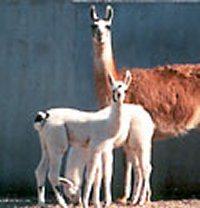Mean values for the concentrations of the major milk components across the lactation period were 4.70% fat, 4.23% protein, 5.93% lactose, 15.61% dry matter, and 22.62 mg/dL of milk urea N.
All constituents were affected by the stage of lactation. There was an increase in fat to protein ratio as protein concentration declined and fat concentration increased. Fat, protein, and lactose concentrations changed during the transition from colostrum to milk. In the first month postpartum, fat concentration remained constant, protein decreased, and lactose increased. Starting with wk 5 postpartum, fat and protein increased and lactose decreased until the end of lactation. Among the major constituents fat had the highest variation. The mean gross energy concentration of milk was 3.88 kJ/g and showed a similar course as protein. Fat contributed 48.0%, protein 26.3%, and lactose 25.7% to the gross energy in the milk. Milk urea N values were higher than those found in ruminants and increased with stage of lactation, whereas the pH decreased. The analyzed milk components were not affected by the lactation number of the animal, except milk urea N. Somatic cell counts indicated the absence of mastitis and revealed that the average somatic cell count of uninfected llamas is lower than in animals usually used for milk production. The 2 algebraic models fitted by a nonlinear regression procedure to the data resulted in suitable prediction curves for the constituents (R2 = 0.76 to 0.94). The courses of major milk constituents in llamas during lactation are similar to those in domesticated ruminants, although different in their values. The established curves facilitate the composition of milk replacers at different stages of lactation for nursing llamas whose dams died or are agalactic.
Changes in Llama Milk Composition During Lactation
22november2006
Milk samples were collected weekly from 10 llamas (Lama glama) during the first 27 week after parturition under controlled stable conditions.
